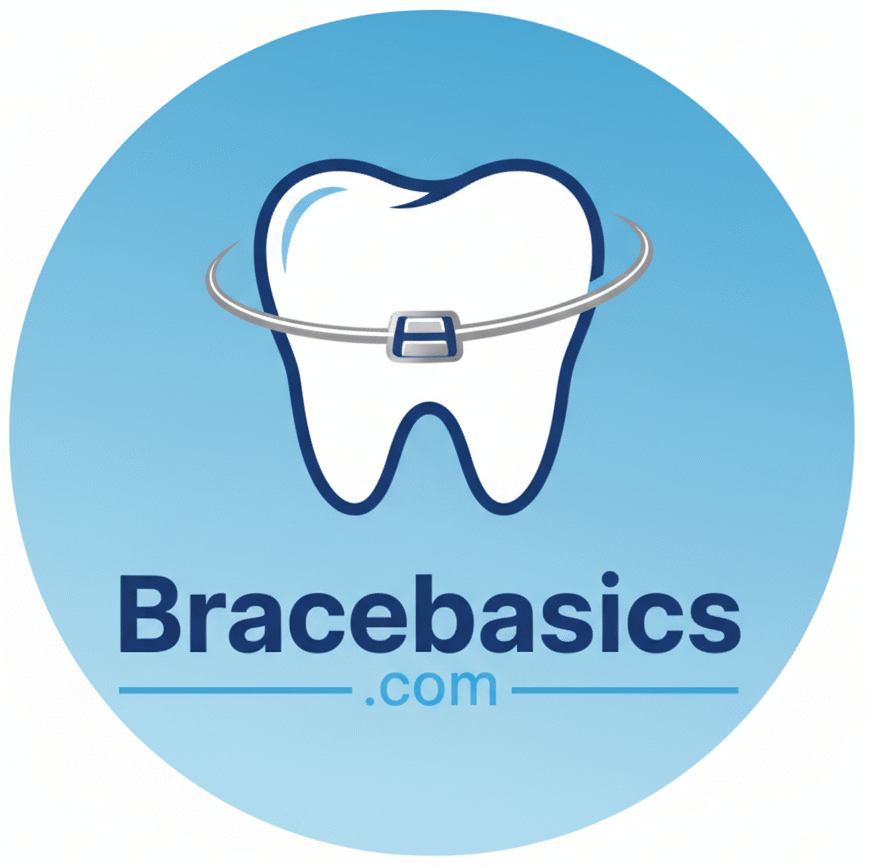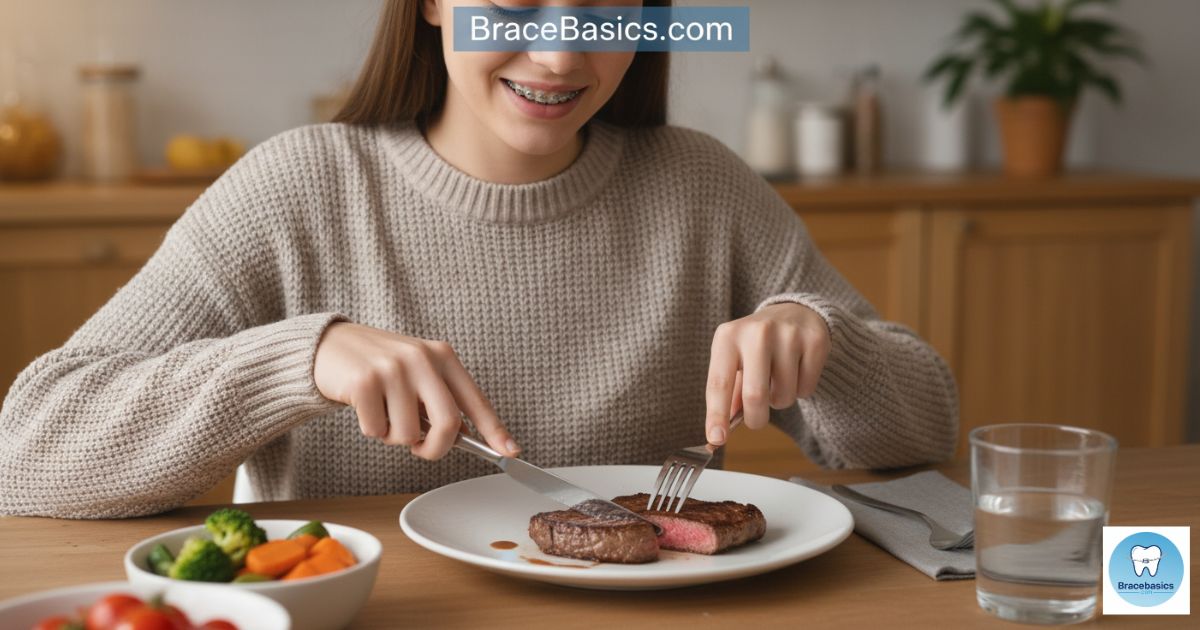When you first get braces, it can feel like your favorite meals suddenly come with warning labels. For steak lovers, that question quickly becomes Can you eat steak with braces? The answer isn’t simple, but with the right preparation and care, yes, you can still enjoy a tender, juicy steak without damaging your orthodontics or causing pain.
Can You Eat Steak With Braces? Short Answer

Yes, you can eat steak with braces, but only if it’s soft, boneless, and properly prepared. Choose tender cuts like filet mignon or rib eye steak, cook them medium or rare for a softer bite, and cut them into small pieces before eating. Avoid chewy, dry, or bone-in steak, as it can strain your brackets and wires, cause chewing difficulties, or even damage your braces.
Still, remember that orthodontics requires patience. Steak can strain sore teeth, especially after adjustments, so take it slow and pick braces-friendly foods when needed.
Understanding the Impact of Braces on Eating Habits
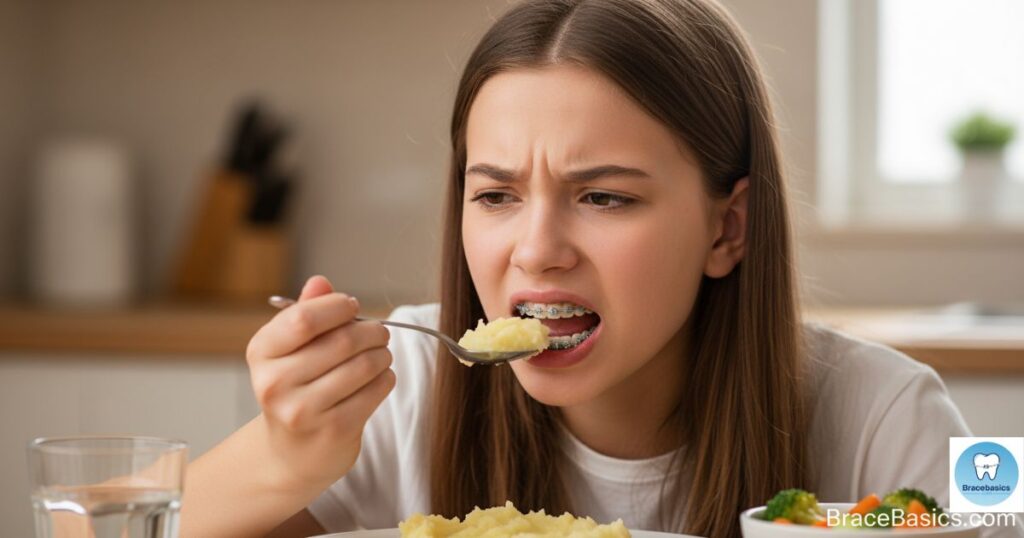
When you start orthodontic treatment, your mouth goes through big changes. The brackets and wires guide your teeth alignment, but they also make biting and chewing a bit tricky. Food that used to be easy now feels harder to manage. Many patients notice chewing difficulties during the first few weeks, especially with firm textures like grilled steak texture or crusty bread.
That’s why your orthodontist gives you a list of braces-safe eating habits. Ignoring it can cause real trouble. Foods that loosen brackets or bend wires can delay your progress. Each broken part means another appointment and more time in braces.
Why Braces Change the Way You Eat
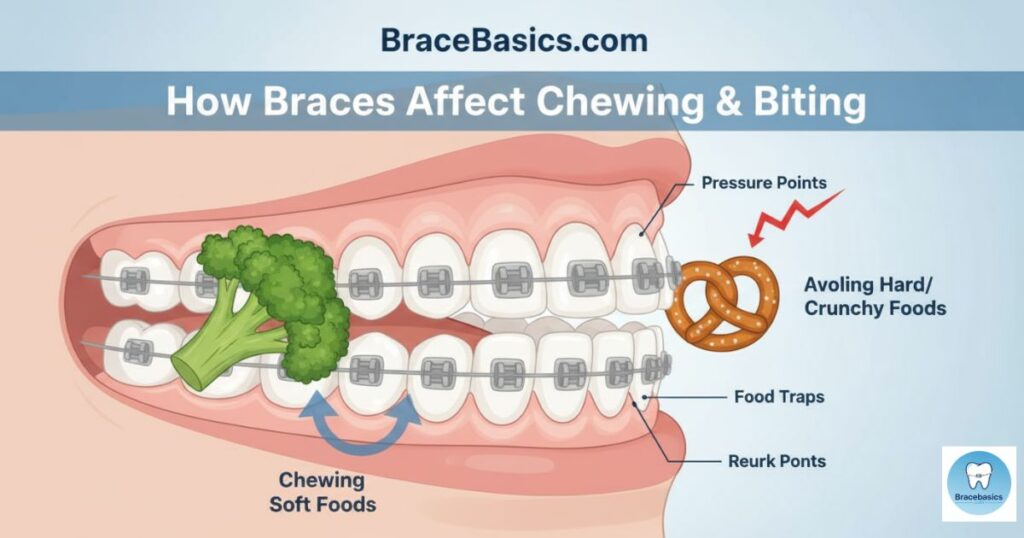
Brackets and wires create new pressure points. So when you bite into tough or chewy foods, that pressure can hurt. Some people also feel soreness after an adjustment, which makes chewing meat with braces painful. Think of your teeth as being gently moved by your braces; biting hard foods like T-bone steak can fight against that movement.
Orthodontists restrict certain foods for your protection. Sticky candies or tough red meat and braces care issues can pull off brackets or cause gum irritation. Following their orthodontist food advice helps your dental health improve faster and keeps your smile on track.
The Importance of Following Dietary Restrictions
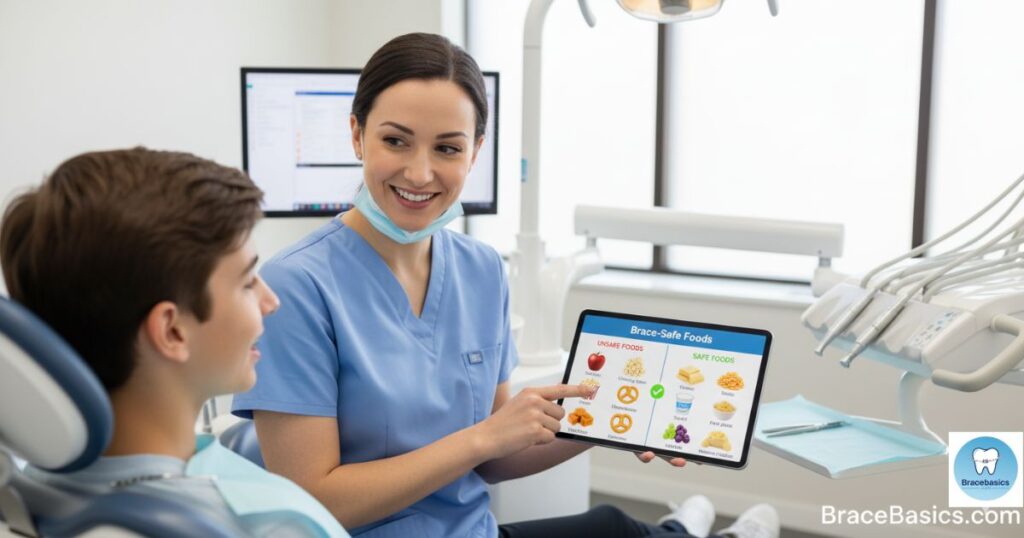
Your orthodontist doesn’t make these rules to be strict—they’re about safety. Hard, sticky, and chewy foods can easily damage braces. Even small things like caramel or cheesesteak pieces can bend wires or pop off brackets. Once that happens, your teeth stop moving properly.
Ignoring these food restrictions with braces can delay your results by months. In worst cases, you might need new orthodontic care or replacements. Keeping your braces safe during meals helps you get that perfect smile faster.
Is It Safe to Eat Steak With Braces?
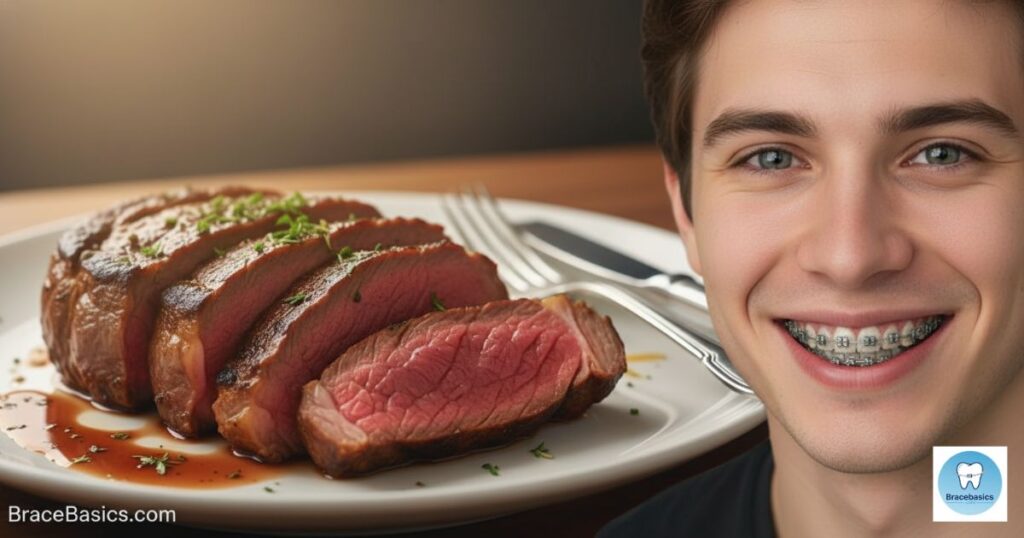
Yes, it’s safe, but only if you’re careful. Eating steak with braces is possible when the meat is soft and cut properly. You just can’t bite into it like before. The key is understanding how grilled food texture and toughness affect your teeth. Steak that’s overcooked or fibrous can stress your brackets and wires and cause soreness.
Steak and orthodontic treatment can work together—if you treat the meat right. Tender, juicy pieces are easy on your braces, while chewy or dry ones can harm them. So the answer is yes, but with a little kitchen strategy.
Chewing Difficulties with Steak
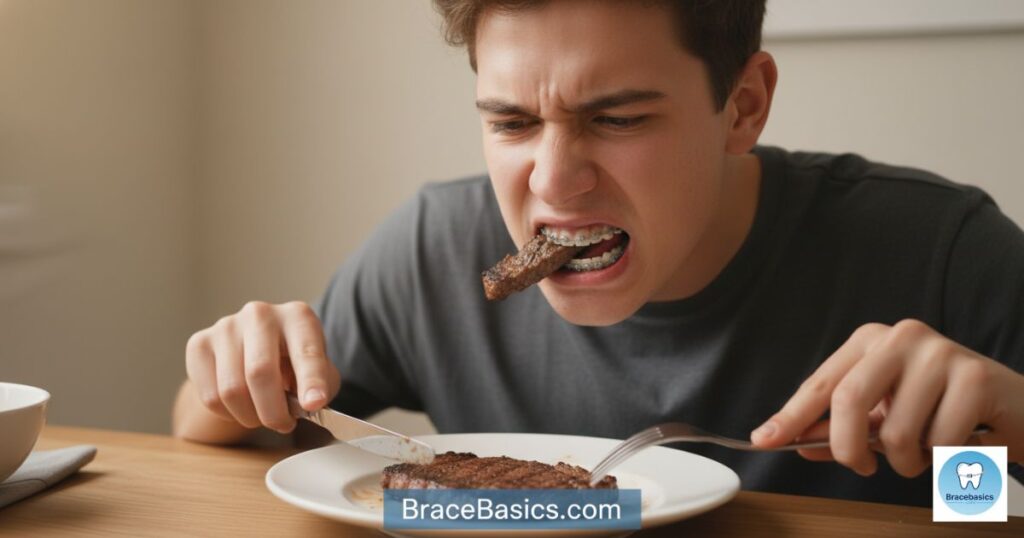
Steak’s natural fibers make it one of the toughest red meats to chew. When you’ve got braces, your teeth don’t have the same bite strength. Chewing difficulties can happen if the steak isn’t tender. That pressure may even loosen a bracket.
If you’ve just had an adjustment, chewing tough foods can be painful. This isn’t about avoiding flavor—it’s about protecting your smile. Softer steak cuts for braces wearers are your safest bet.
Preparing Steak for Braces Wearers
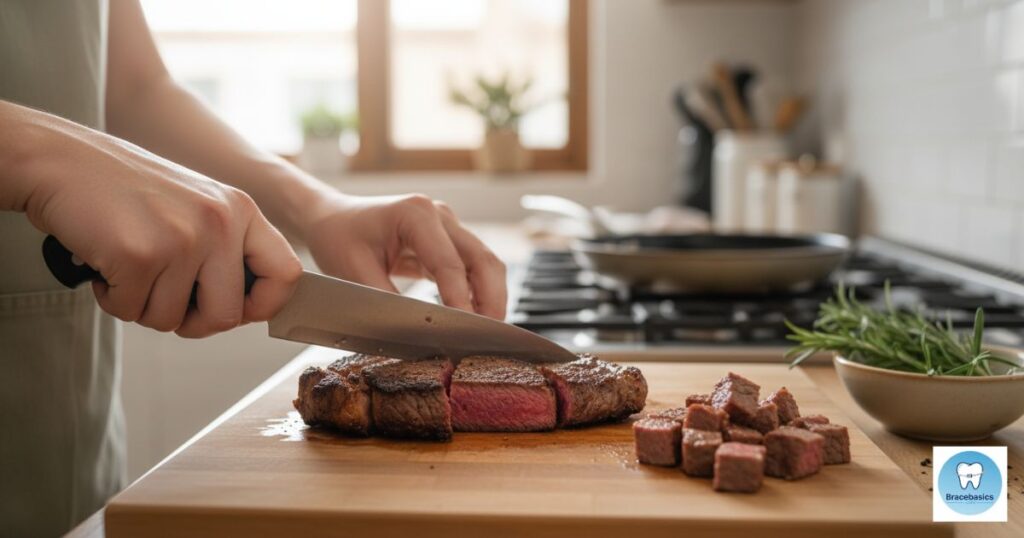
To safely enjoy steak, start with softer cuts like filet mignon, rib eye steak, or sirloin tips. These options are tender and easy on your braces. Avoid well-done steak—it turns chewy and increases strain on your teeth.
Marinating or slow-cooking helps break down fibers. This makes eating thin steak slices smoother. The more tender it is, the less pressure your braces face.
| Tender Cuts for Braces | Avoid These Cuts |
| Filet Mignon | T-Bone Steak |
| Rib Eye | Skirt Steak |
| Tenderloin | Chuck Roast |
| Ground Sirloin | Jerky or Dry Meat |
Smart Eating Techniques
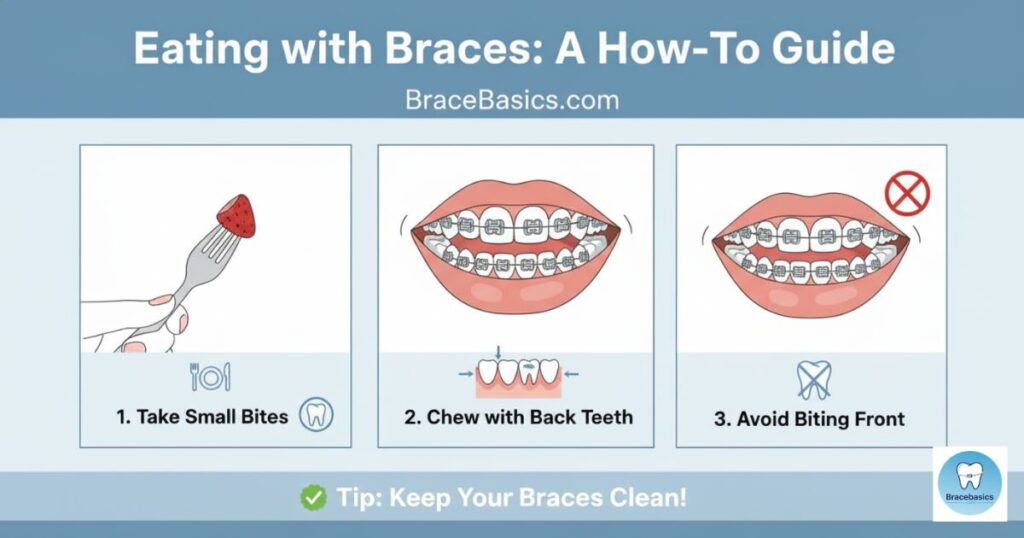
You can enjoy steak if you handle it smartly. Cut it into small, bite-sized pieces and chew gently with your back teeth. Avoid biting directly with your front teeth—it’s where most brackets sit.
Trimming off chewy fat and gristle protects your tooth enamel and brackets. Slow chewing helps prevent discomfort and gives you better flavor control. Always avoid bone-in steaks since they can crack wires or brackets.
Foods You Should Avoid With Braces
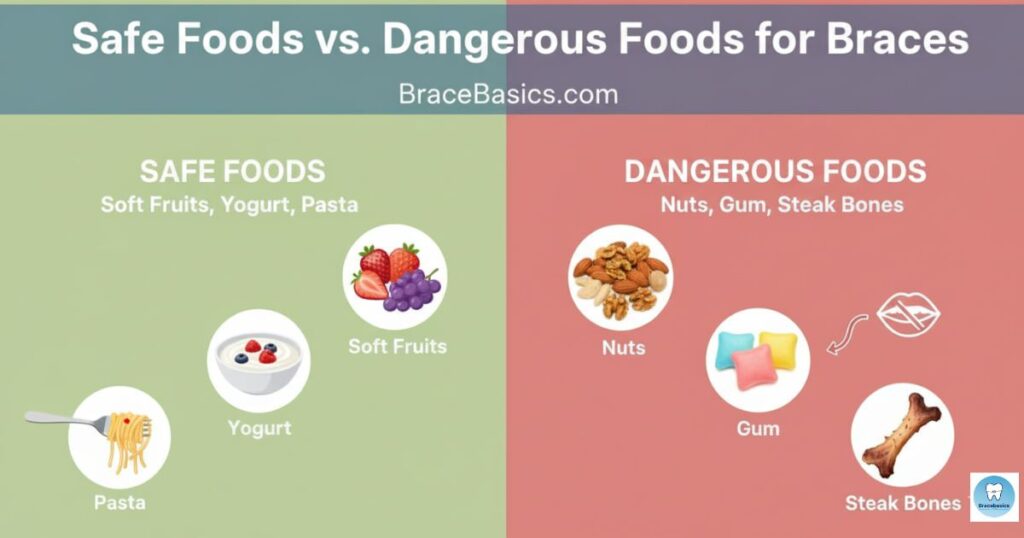
Certain foods can ruin braces fast. Sticky treats like gum, caramel, and taffy pull off brackets easily. Hard snacks like popcorn, nuts, or ice can bend wires. Avoid tough meats and jerky—they’re high-risk and can pop off brackets.
Your best choices are soft foods for braces, especially during the first few weeks. They reduce pain and protect your orthodontics.
What To Eat After Getting Braces
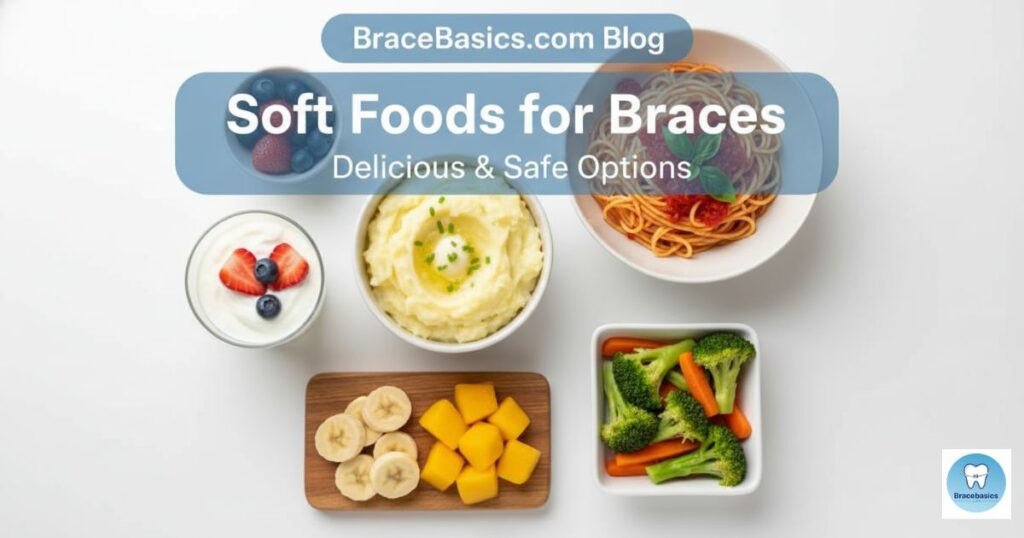
In the early days, eat soft meals that don’t need much chewing. Gentle options like mashed potatoes, pasta, soft fruits, yogurt, and steamed vegetables are ideal.
Here’s a quick look at what works best:
| Safe Foods | Why They Help |
| Mashed Potatoes | Gentle on sore gums |
| Pasta | Easy to chew |
| Soft Fruits | Natural and smooth |
| Yogurt | Rich in calcium |
| Cooked Vegetables | Soft and vitamin-rich |
These braces-friendly foods protect your brackets and keep your dental health strong while you adjust.
10 Expert Tips for Eating Steak With Braces
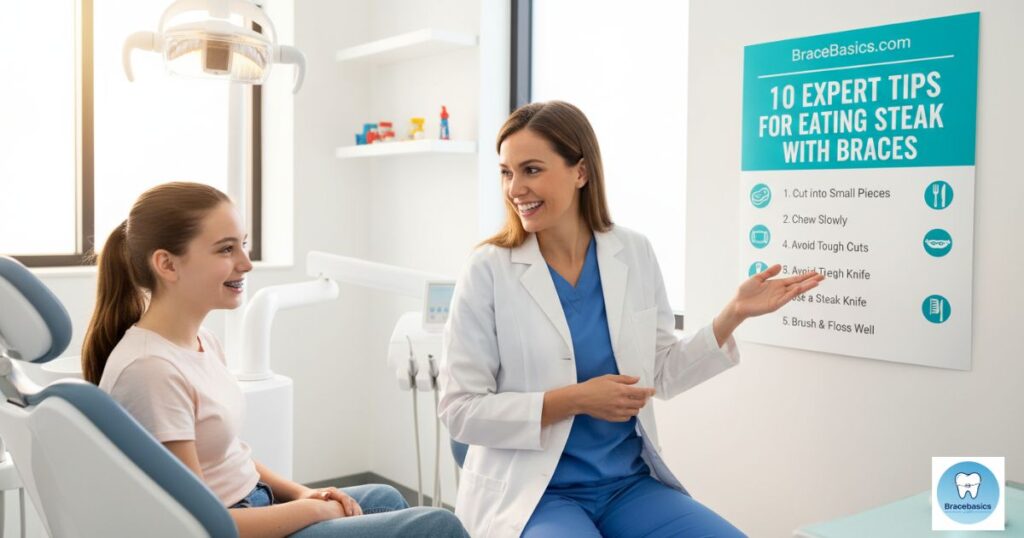
1. Choose Tender and Boneless Cuts of Steak
2. Cook Your Steak Until It’s Soft and Easy to Chew
3. Cut Steak Into Thin, Bite-Sized Pieces Before Eating
4. Avoid Hard, Chewy, or Overcooked Steak Textures
5. Always Chew Slowly and Use Your Back Teeth
6. Stay Away From Steak with Bones or Tough Edges
7. Rinse and Clean Your Braces After Eating Steak
8. Go for Braces-Friendly Side Dishes Like Mashed Potatoes or Pasta
9. Avoid Sugary or Acidic Steak Sauces That Harm Tooth Enamel
10. Ask Your Orthodontist for Personalized Food Advice
Do’s and Don’ts of Eating Steak With Braces
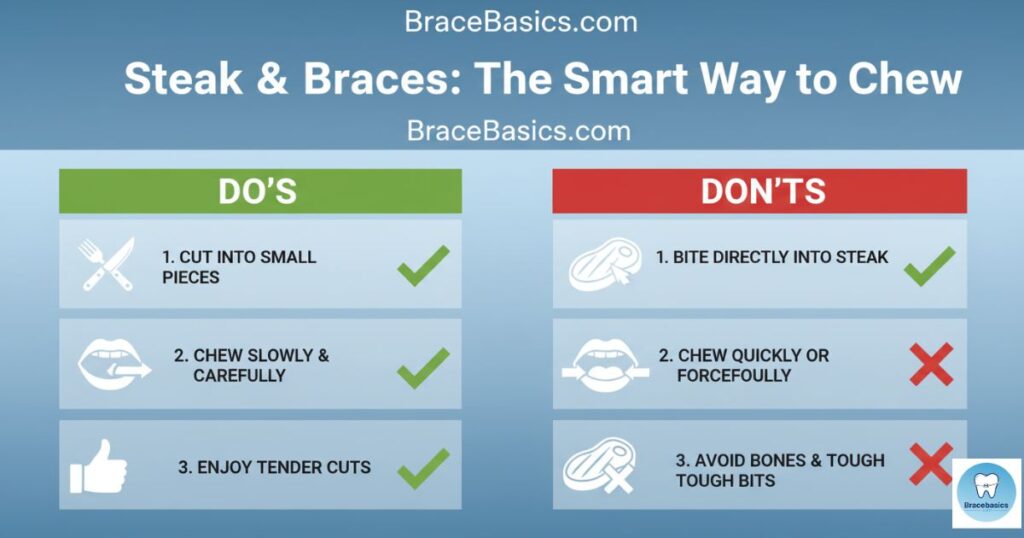
Do choose soft cuts, chew slowly, and clean well after every meal. Avoid biting into large chunks or bone-in steak. Never eat tough or overcooked meat—it can cause braces damage.
Pay attention to how your teeth feel. If you notice soreness or a loose wire, visit your orthodontist. Keeping small habits like this keeps your orthodontic care smooth and worry-free.
How to Keep Braces Clean After Eating Steak
After enjoying your steak, clean up carefully. Use a soft-bristle brush and fluoride toothpaste. A water flosser or oral irrigator removes hidden meat fibers. Rinse with warm water or mouthwash to remove food acids.
When you’re out, carry a small braces cleaning kit. It helps maintain dental care after eating steak and prevents staining and discoloration from sauces or gravies.
How to Brush Teeth with Braces (Complete Guide)
FAQs
Can I Eat Steak Right After Getting Braces?
Not immediately. Wait about a week until soreness fades. During that time, focus on soft foods for braces like mashed potatoes, soups, and yogurt.
Can I Eat Steak If I Have Rubber Bands?
Yes, but chew carefully. Rubber bands increase jaw tension, making chewing meat with braces more difficult.
What If Steak Gets Stuck in My Braces?
Rinse your mouth with warm water. Then use floss threaders, an oral irrigator, or interdental brushes to remove it. Never use sharp objects.
Does Steak Cause Staining on Braces?
Steak itself doesn’t stain, but sauces and gravies can lead to staining and discoloration. Brush and rinse after eating to protect your tooth enamel.
Is Well-Done or Rare Steak Better for Braces?
Rare or medium steak is softer and easier to chew than well-done meat. Avoid tough textures that can harm your brackets and wires.
What Are Some Braces-Friendly Meat Alternatives?
Try ground beef, chicken, fish, or meatloaf. These are easier to chew and still give your body the protein it needs.
What cannot we eat in braces?
You should avoid hard, sticky, and chewy foods like nuts, popcorn, gum, caramel, and tough meats. These can bend wires, loosen brackets, or damage your orthodontics, slowing down your teeth alignment progress.
How long until I can eat meat with braces?
Wait at least one week after getting braces before eating meat. During this time, your teeth and gums adjust to the new pressure from brackets and wires. Start with soft foods, then slowly introduce tender meats like fish or shredded chicken before trying steak.
What cuts of steak are easiest to eat with braces?
Choose soft, tender cuts like filet mignon, rib eye steak, or tenderloin. These are easier to chew and less likely to harm your braces. Avoid T-bone steak or overcooked meat, as they’re tougher and can cause chewing difficulties.
Final Thoughts
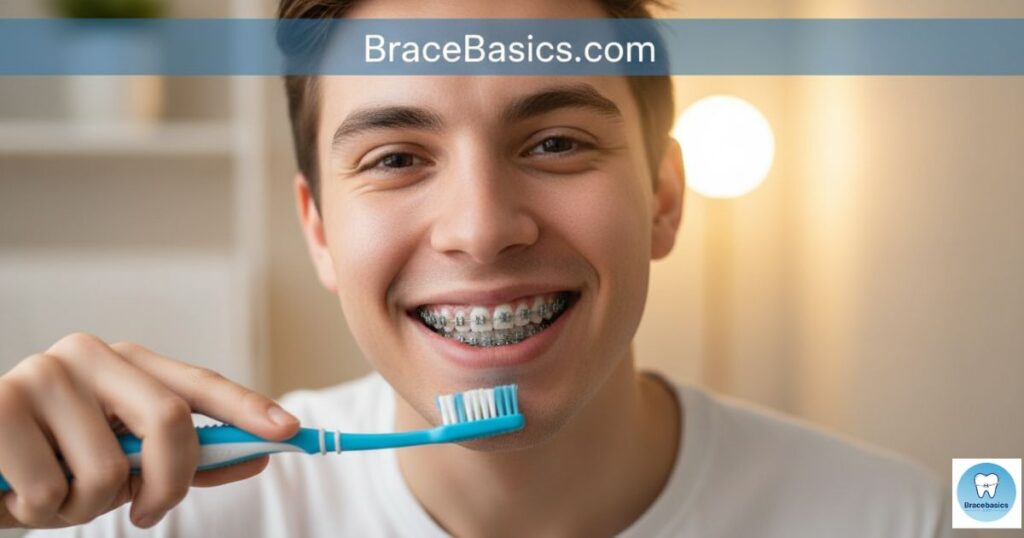
You can enjoy steak with braces if you stay cautious. Focus on tender, boneless cuts and chew gently. Follow your orthodontist food advice, and clean your braces after every meal.
Remember, steak lovers with braces don’t need to give up their favorite food—they just need to be smart about it. A little care keeps your braces safe and your smile healthy until the day those wires come off.
For more information, expert advice, and braces-friendly eating tips, visit BraceBasics.com your trusted guide to a confident, healthy smile.
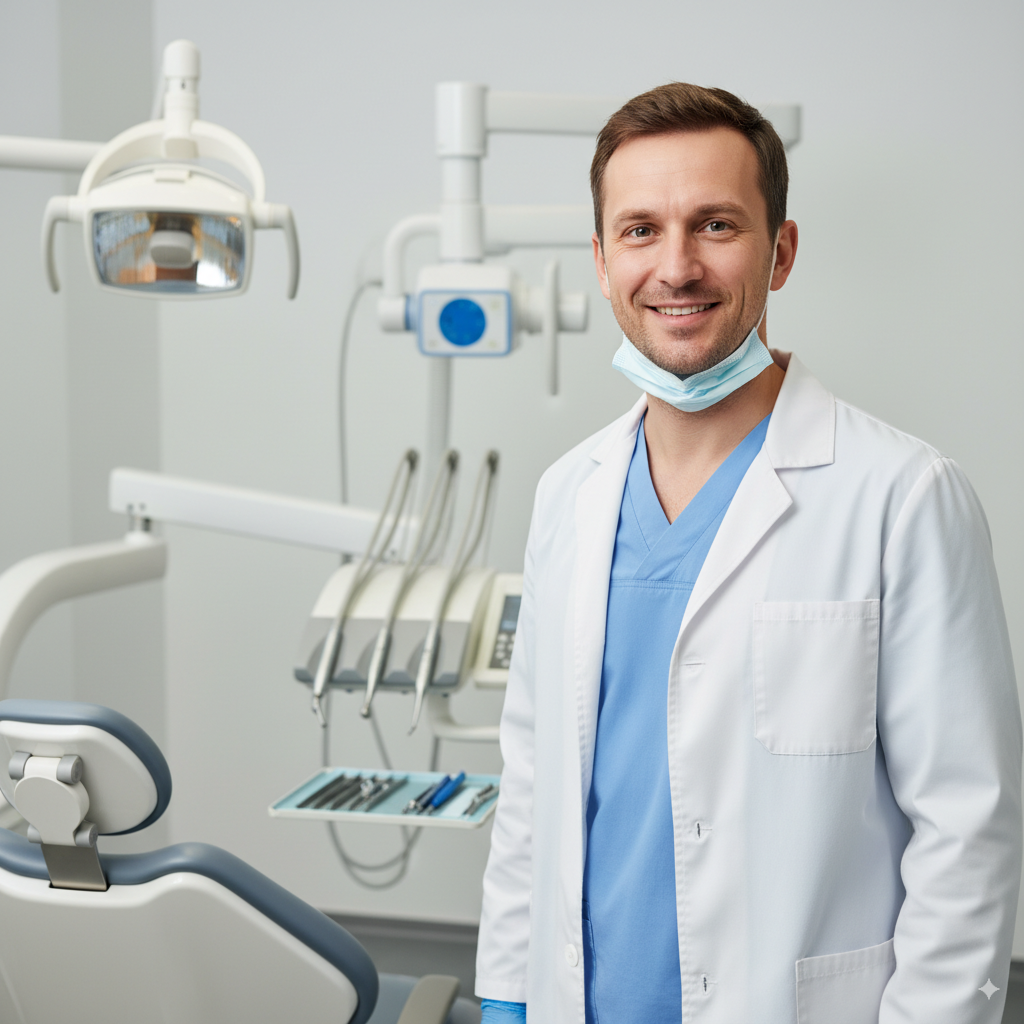
Hi, I’m Dr. Martin, the founder of BracsBasics.com. With years of experience in orthodontics, I’ve made it my mission to simplify braces care for patients of all ages. Here, you’ll find easy-to-understand advice, practical tips, and reliable resources to make your braces journey smoother, healthier, and stress-free. My goal is to help you smile with confidence every step of the way.
